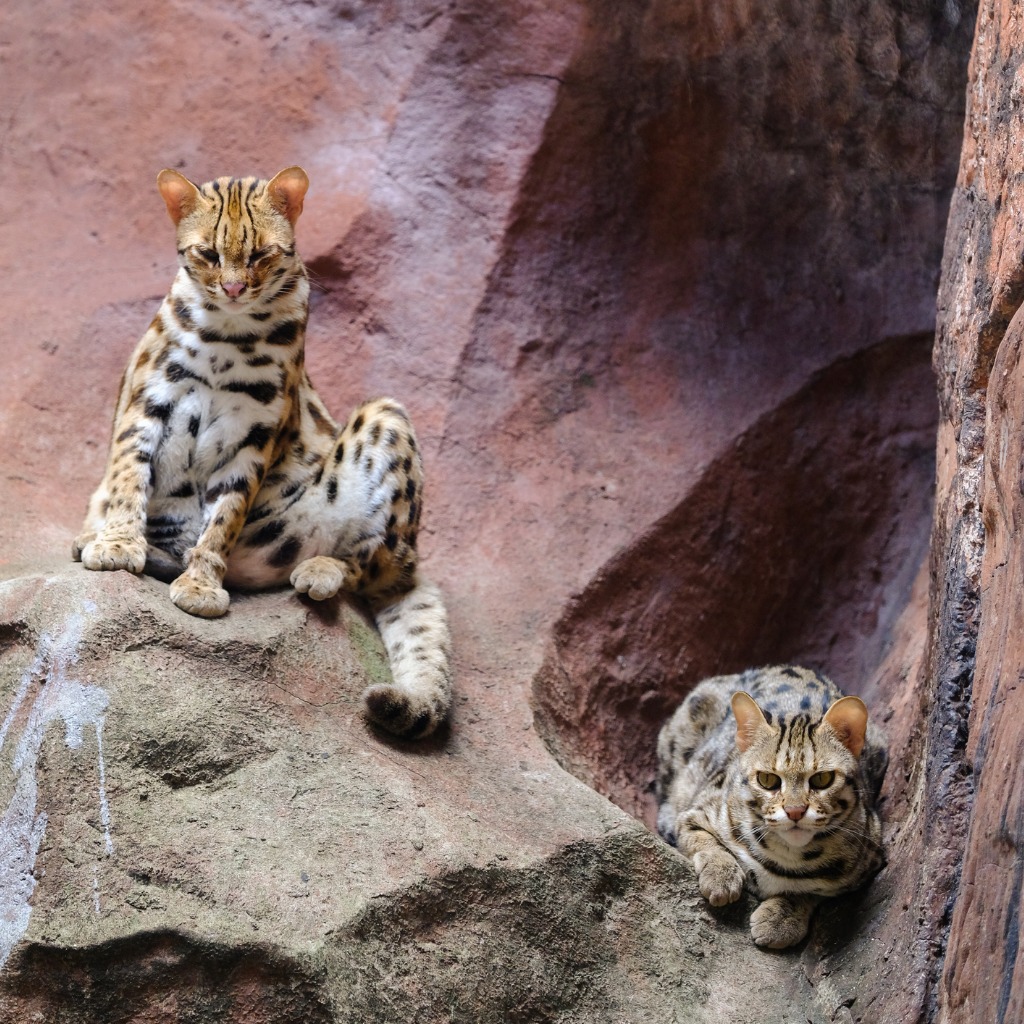

The Bengal cat derived from crossing the Asian leopard cat, Felis bengalensis and in the 50s and in 60s could be purchased in pet stores around the USA as a domestic Shorthair.
Jean Mill, a breeder from California, was the first who did the crossing, which happened by sheer accident and not because she wanted to create a new breed. She had acquired a leopard cat and left her in the company of a black tom cat, so she was not lonely. The leopard cat produced kittens, Mill then decided to mate a girl from the litter with her father and produced a litter of spotted and solid kittens.
Around the same time, Dr. Willard Centerwall crossed an Asian leopard cat with domestic cats at Loyola University. Leopard cats were resistant to the feline leukaemia virus (FLV), so the researchers were interested in determining whether the symptoms of FLV would be transferred to hybrid offspring.
Breeders interested in the development of cats as a separate pedigree breed. Mill was one of them and her circumstances during this time forced her to quit the breeding of cats, but she was ready to start again. She acquired some hybrids from Dr. Centervale and found suitable breeding males. One of them was red-haired house cat, which she found in India, and the other was a brown spotted tabby, which she took from shelter.
The first cat association to recognise the Bengal as a breed was The International Cat Association (TICA), which provided the experimental status of the breed in 1983, followed by full recognition in 1991. The Bengal cats are also recognised by The American Association of Cat Fanciers, The Canadian Cat Association, and the United Feline Organisation.
It is recommended that Bengal cats should be purchased at least four generations F4 from their wild ancestors the Asian Leopard Cat (ALC).



